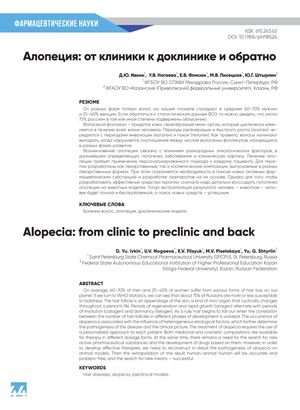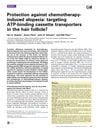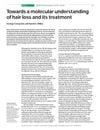Alopecia: From Clinic to Preclinic and Back
December 2019
in “
Formuly farmacii
”

TLDR Many people suffer from hair loss, which is caused by a disruption in hair growth, and there is a need for personalized treatments and new drugs.
The document highlights that a significant portion of the global population suffers from hair loss, with 60-70% of men and 25-40% of women affected, and in Russia, about 75% of people experience baldness to some extent. It emphasizes that alopecia results from a disruption in the balance of hair follicle growth phases, influenced by various etiological factors that shape the disease's pathogenesis and clinical presentation. The need for personalized treatment is acknowledged, with both medicinal and cosmetic solutions available, but there is a call for new pharmaceutical substances and drug development. The paper stresses the importance of using animal models to reconstruct alopecia pathogenesis for better human treatment extrapolation. Additionally, it suggests that hair can act as a "health barometer," potentially reflecting internal health issues, and differentiates between scarring and non-scarring types of alopecia, each with its own causes and development mechanisms.








